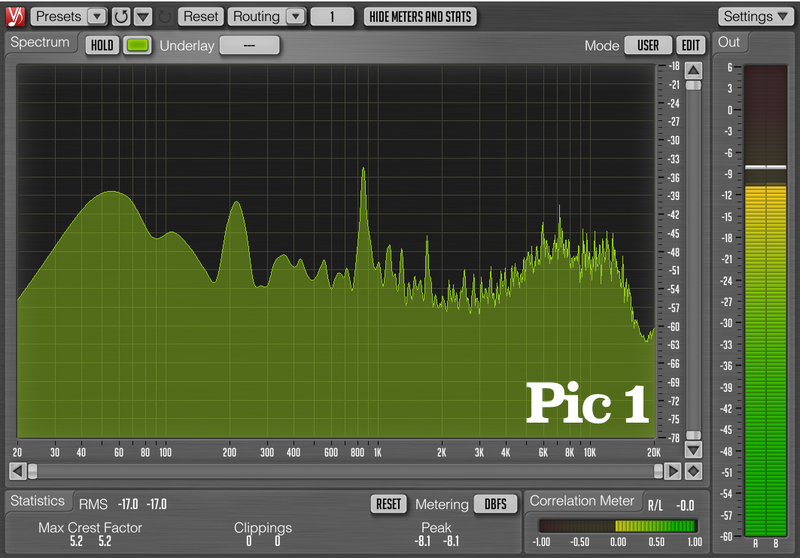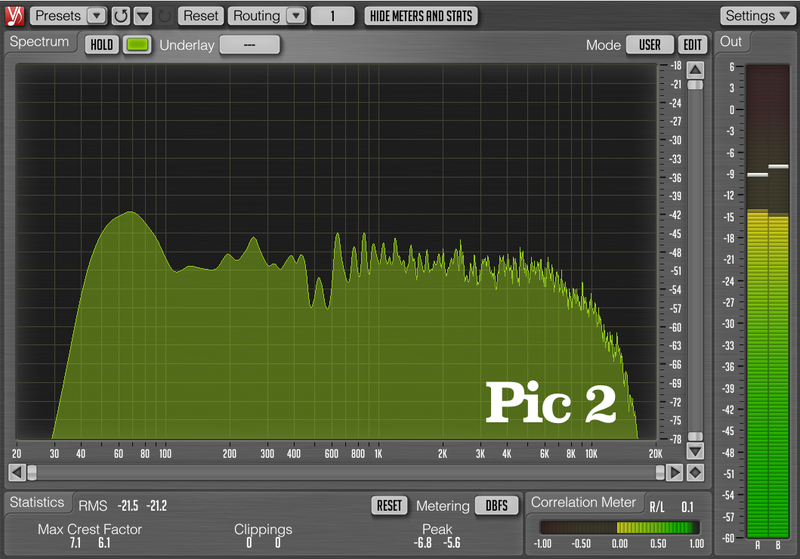

Some time ago I blogged about getting your sub bass right. Another thing worth mentioning relating to having a good sub is highpass-filtering the song – and being careful with it. Sometimes I see this done wrong in the premasters I receive for mastering, and thought writing about this might help producers to get the sub right. This mostly applies to “bass music” where the sub bass is lower than the kick and where we want to achieve the fat, full low end, but can definitely be used with other genres, too.
Why HP-filter your song? There’s two things.
1) To get rid of excess lows and rumble and to gain more headroom – and to make it louder in the end. It’s good practice to highpass the signal around 25–40Hz, but one should go for mellow slopes such as 12 dB per octave. Once again, listen carefully, and if your listening environment isn’t the best, use a visual aid such as Voxengo SPAN. In SPAN, you should always see something even in the very lowest region. See Pic 1 above for how it looks when you’ve got it all right, and Pic 2 for how it looks when the high passing has been done too high/steep. That won’t sound natural, and causes problems in mastering if we want to get a weighty result.
2) High passing the whole song and with a resonant HP filter can actually help to boost the sub, too, and make it more “firm” – where it matters. In mastering, I always set the filter to create a little “bump” around 40 Hz, which can be set to taste and according to the song. It does make the low end more firm in most cases in bass music.
I’ve had a few mastering cases where HPing at 40 Hz made the song feel like it loses too much meat, but then again, IMHO, having fundamental at 35 Hz or so is a little too low, and 98% of the songs I master get the 40 Hz treatment and they come out great.
If you found this blog post helpful, please consider sharing.
Happy filtering!